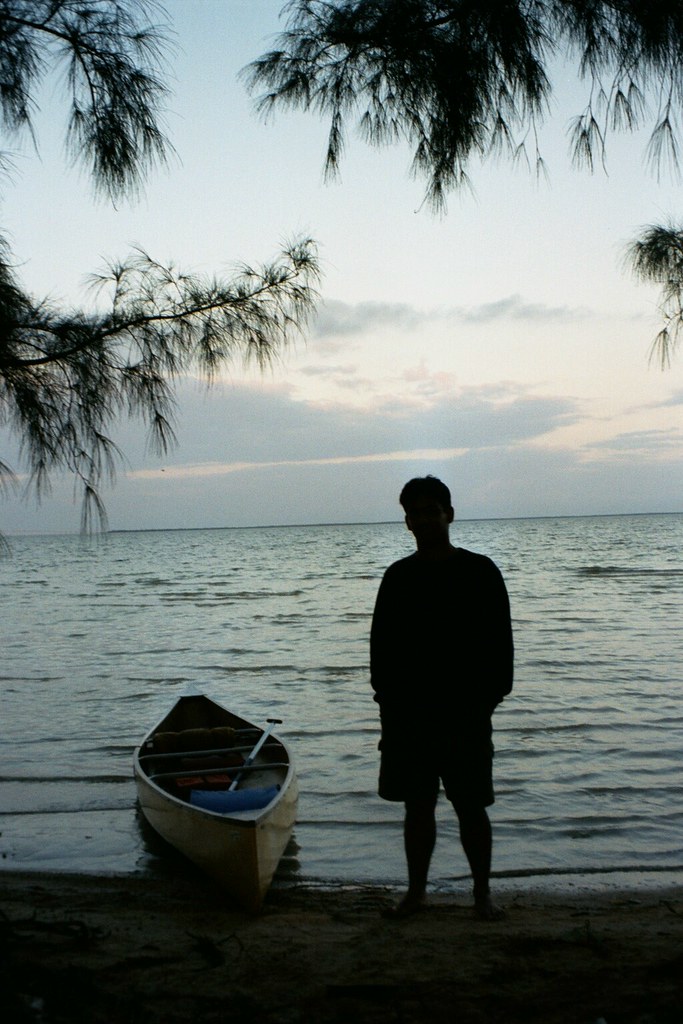A few weekends back IUP organized a tour of the great wall for its students. At 8 am on a chilly Saturday morning, about 30-40 students and laoshis squeezed into a bus waiting outside Tsinghua’s East Gate. Our destination was not Badaling or any of the other more famous Great Wall sites that lie within an hours drive of Beijing, but instead a section of the wall from Jinshanling to Simatai renowned for its picturesque beauty and relatively untouched—that is, still authentic—masonry.
Sleepy, not a little bit tired after a strenuous first week, but also somewhat glad to be getting involved in some sort of activity, we set off. Heading in a generally northeast direction we threaded our way through Beijing’s suburbs and soon hit farmland and rolling hills. (On a clear day, a rarity given the city’s pollution, these hills are visible from my flat window in Wudaokou). From a distance most of the crops appeared to be wheat, though every now and then I thought I also spied some corn. Given my generally superior knowledge on this front, I would recommend readers go elsewhere to learn about land use surrounding Beijing.
While most students had opted to bring their study material with them, the initial part of the journey was spent celebrating one of our tongxue’s birthdays. After traveling for about 3 hours, which included a pit stop at a highway rest area, we stopped at a village for lunch. Instead of booking a regular restaurant, IUP had decided to expose us to Chinese countryside (nongcun) cuisine. We all gathered in a relatively large courtyard, about 6-7 to a table, as plates filled with nongcun fan were brought to us. Besides the fattened beef, things seemed decidedly less oily than in a standard Beijing restaurant. That said, it seemed like a lot of the food I’d had earlier, and not entirely distinctive.
Another 30 minutes on the bus brought us to Jinshanling. We had already caught glimpses of the wall from the road, but now we were finally at the wall.
The Jinshanling section of the great wall is located about 140 kilometers to the northeast of Beijing. It is so named as it straddles the Jinshan (shan=mountain) range. Work on the wall was begun with the establishment of the Ming in 1368 and lasted 21 years till 1389. It was subsequently rebuilt, in all likelihood primarily repair work, in the latter half of the 16th century. About eleven kilometers in all, it connects in the east with the Simatai section of the wall. Simatai owes its fame as the most beautiful section of the wall largely to neglect. While sites such as Badaling and Mutianyu have undergone extensive restoration, the Simatai site has lain untouched. It stretches for a total of about 20 kilometer on either of the Simatai reservoir. Simatai has an older history than Jinshanling, with some scholars dating wall construction in the area to as early as the Northern Qi (550-577 C.E.). It first surfaces in Ming dynasty sources in 1382. The section was periodically rebuilt or strengthened during the Ming and also helped repel Mongol raids in the second half of the 16th century.*
Our four-hour hike would take us from Jinshanliang to the reservoir at Simatai.
*The source for the history of Jinshanling and Simatai is the IUP information packet, and most notably the sections by great wall researcher David Spindler (IUP 1989-90).
Subscribe to:
Post Comments (Atom)

No comments:
Post a Comment